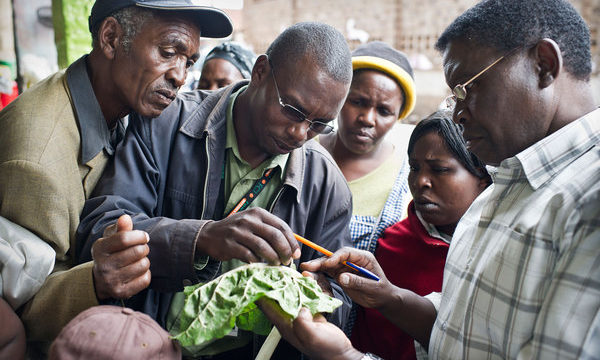
Holly is one of the most traditional Christmas plants, and now new research has shed light on the mechanisms determining the prickliness of holly leaves © Sugar Daze via Flickr (License CC-BY-ND 2.0)
Holly leaves are a quintessential part of Christmas, whether they are hung up as decorations in boughs and wreaths, as a seasonal garnish on top of Christmas puddings or on the front of Christmas cards. Now new research published in the Botanical Journal of the Linnean Society has connected a combination of herbivore activity and epigenetics to the prickliness of holly leaves.
A number of studies have supported the idea that increased plant prickliness is a response to herbivory by large browsing animals such as deer and goats. Holly (Ilex aquifolium) is a small evergreen tree found throughout Europe and North Africa. The leaves of holly can either be smooth or with a variable number of tough spines along the margins. The production of these spiny leaves is a defence mechanism against herbivores. Holly trees sometimes only have one leaf type, but typically they have both prickly and non-prickly leaves on the same plant (known as heterophylly) with the proportion of the two types depending on plant age, size and recent browsing history.
“The ability of an organism to change its characteristics in response to environmental variations is known as phenotypic plasticity and it is a key driving factor in the evolution of a species” said Dr Carlos Herrera from the National Research Council of Spain (CSIC) in Seville.
This study compared the DNA profiles of prickly and non prickly leaves and correlated browsing and the production of prickly leaves between trees. The results of the study support the link between herbivory, phenotypic plasticity and epigenetic changes in plants, adding to the consensus that epigenetic variation can complement genetic variation as a source of phenotypic variation in natural plant populations. The study suggested that damage by herbivores was the best single predictor of variation among trees in the proportion of branches with prickly leaves. Heterophylly is a common phenomenon in many different types of plants, including ivy (Hedera helix), another traditional Christmas plant.
The results of this study support the role of animal browsing as an inducer of the production of prickly leaves in holly. The study showed that trees with lower branches closest to the ground received the most browsing damage by animals, and there was a significant association between browsing and the proportion of branches with prickly leaves. The exact mechanisms which drive the switches in holly leaf type dependent on environmental alterations still require more research to understand further, however this study has been important in deciphering the genomic changes which can occur in plants in response to herbivory.
References:
‘Unwelcome Biting Turns Holly Prickly’ by Alun Salt, December 2012, AoB Blog
1 Comment
Leave a Reply
Related News & Blogs
Why the green peach aphid is such a successful pest
Myzus persicae (green peach aphid); an alate (winged) adult Recent research highlights why the green peach aphid (Myzus persicae) is one of the most successful crop pests. These findings will help further the development of effective management and con…
15 February 2017



[…] Deck The Halls With Boughs Of Holly (plantwise.org) […]